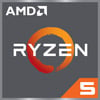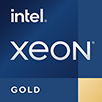
Qualcomm Snapdragon 427 Benchmark, Test and specs
Last updated:
The Qualcomm Snapdragon 427 is a 4 core processor. It can process 4 threads concurrently and is based on the 3. gen of the Qualcomm Snapdragon series. The processor was released in Q1/2017. The Qualcomm Snapdragon 427 scores 116 points with one CPU core in the Geekbench 5 benchmark. When using all CPU cores, the result is 376 points.

| Name: | Qualcomm Snapdragon 427 |
|---|---|
| Family: | Qualcomm Snapdragon (102) |
| CPU group: | Qualcomm Snapdragon 425/427 (2) |
| Architecture: | Cortex-A53 |
| Segment: | Mobile |
| Generation: | 3 |
| Predecessor: | -- |
| Successor: | -- |
CPU Cores and Base Frequency
The 4 CPU cores of the Qualcomm Snapdragon 427 clock with 1.40 GHz. The number of CPU cores and the clock frequency of the processor are largely responsible for the overall performance.
| CPU Cores / Threads: | 4 / 4 |
|---|---|
| Core architecture: | normal |
| Cores: | 4x Cortex-A53 |
| Hyperthreading / SMT: | No |
|---|---|
| Overclocking: | No |
| Frequency: | 1.40 GHz |
| Turbo Frequency (1 Core): | -- |
| Turbo Frequency (4 Cores): | -- |
Artificial Intelligence and Machine Learning
Processors with the support of artificial intelligence (AI) and machine learning (ML) can process many calculations, especially audio, image and video processing, much faster than classic processors. Algorithms for ML improve their performance the more data they have collected via software. ML tasks can be processed up to 10,000 times faster than with a classic processor.
| AI hardware: | Qualcomm AI engine |
|---|---|
| AI specifications: | Hexagon 536 |
Internal Graphics
With the Qualcomm Adreno 308, the Qualcomm Snapdragon 427 has an build in graphic solution. It has -- SM processors, which have a total of 24 texture shaders. The iGPU not only enables games, but also significantly accelerates video playback.
| GPU name: | Qualcomm Adreno 308 |
|---|---|
| GPU frequency: | 0.50 GHz |
| GPU (Turbo): | 0.50 GHz |
| Compute units: | -- |
| Shader: | 24 |
| Hardware Raytracing: | No |
| Release date: | Q1/2016 |
| Max. displays: | 0 |
|---|---|
| Generation: | 3 |
| Direct X: | 11 |
| Technology: | 28 nm |
| Max. GPU Memory: | -- |
| Frame Generation: | No |
Hardware codec support
Processors that have an integrated graphics can play videos faster and more efficiently. This can have a positive effect on the battery life of notebooks, for example.
| h265 / HEVC (8 bit): | Decode |
|---|---|
| h265 / HEVC (10 bit): | No |
| h264: | Decode / Encode |
| VP8: | No |
| VP9: | No |
| AV1: | No |
|---|---|
| AVC: | No |
| VC-1: | Decode |
| JPEG: | Decode / Encode |
Memory & PCIeThe Qualcomm Snapdragon 427 supports up to 4 GB memory in up to 1 (Single Channel) memory channels. This results in a maximum memory bandwidth of 5.4 GB/s. |
|
| Memory type: | Memory bandwidth: |
|---|---|
| LPDDR3-1333 | 5.4 GB/s |
| Max. Memory: | 4 GB |
| Memory channels: | 1 (Single Channel) |
| ECC: | No |
| PCIe: | |
| PCIe Bandwidth: | -- |
Thermal ManagementWith the TDP, the processor manufacturer specifies the cooling solution required for the processor. The Qualcomm Snapdragon 427 has a TDP of . |
|
|---|---|
| TDP (PL1 / PBP): | |
| TDP (PL2): | -- |
| TDP up: | -- |
| TDP down: | -- |
| Tjunction max.: | -- |
Technical details
The Qualcomm Snapdragon 427 has a 0.00 MB large cache. The processor is manufactured in 28 nm. Modern production increases the efficiency of the processor.
| Technology: | 28 nm |
|---|---|
| Chip design: | Chiplet |
| Socket: | -- |
| L2-Cache: | -- |
| L3-Cache: | -- |
| AES-NI: | No |
| Operating systems: | Android |
| Virtualization: | None |
|---|---|
| Instruction set (ISA): | Armv8-A (64 bit) |
| ISA extensions: | -- |
| Release date: | Q1/2017 |
| Release price: | -- |
| Part Number: | MSM8920 |
| Documents: | Technical data sheet |
Rate this processor
Benchmark results

The benchmark results for the Qualcomm Snapdragon 427 have been carefully checked by us. We only publish benchmark results that have been created by us or that have been submitted by a visitor and then checked by a team member. All results are based on and fullfill our benchmark guidelines.
Geekbench 5, 64bit (Single-Core)
Geekbench 5 is a cross plattform benchmark that heavily uses the systems memory. A fast memory will push the result a lot. The single-core test only uses one CPU core, the amount of cores or hyperthreading ability doesn't count.

|
AMD E1-1200
2C 2T @ 1.40 GHz |
||

|
AMD E-450
2C 2T @ 1.65 GHz |
||
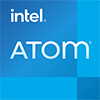
|
Intel Atom D2700
2C 4T @ 2.13 GHz |
||
|
|
Qualcomm Snapdragon 427
4C 4T @ 1.40 GHz |
||
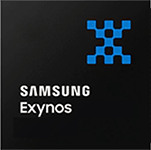
|
Samsung Exynos 7870
8C 8T @ 1.60 GHz |
||

|
MediaTek MT6735
4C 4T @ 1.30 GHz |
||

|
Intel Atom D2500
2C 2T @ 1.86 GHz |
||
Geekbench 5, 64bit (Multi-Core)
Geekbench 5 is a cross plattform benchmark that heavily uses the systems memory. A fast memory will push the result a lot. The multi-core test involves all CPU cores and taks a big advantage of hyperthreading.

|
Intel Celeron E1400
2C 2T @ 2.00 GHz |
||

|
Intel Pentium D 915
2C 2T @ 2.80 GHz |
||

|
Intel Pentium T2310
2C 2T @ 1.46 GHz |
||
|
|
Qualcomm Snapdragon 427
4C 4T @ 1.40 GHz |
||

|
Samsung Exynos 7578
4C 4T @ 1.50 GHz |
||

|
MediaTek MT8735
4C 4T @ 1.30 GHz |
||

|
Intel Atom x6200FE
2C 2T @ 1.00 GHz |
||
iGPU - FP32 Performance (Single-precision GFLOPS)
The theoretical computing performance of the internal graphics unit of the processor with simple accuracy (32 bit) in GFLOPS. GFLOPS indicates how many billion floating point operations the iGPU can perform per second.

|
Intel Atom D2500
Intel GMA 3600 @ 0.40 GHz |
||

|
Intel Atom N2600
Intel GMA 3600 @ 0.40 GHz |
||

|
Intel Atom N2800
Intel GMA 3600 @ 0.40 GHz |
||
|
|
Qualcomm Snapdragon 427
Qualcomm Adreno 308 @ 0.50 GHz |
||

|
Qualcomm Snapdragon 425
Qualcomm Adreno 308 @ 0.50 GHz |
||

|
Qualcomm Snapdragon 215
Qualcomm Adreno 308 @ 0.50 GHz |
||

|
MediaTek MT6738
ARM Mali-T860 MP2 @ 0.35 GHz |
||
Estimated results for PassMark CPU Mark
Some of the CPUs listed below have been benchmarked by CPU-monkey. However the majority of CPUs have not been tested and the results have been estimated by a CPU-monkey’s secret proprietary formula. As such they do not accurately reflect the actual Passmark CPU mark values and are not endorsed by PassMark Software Pty Ltd.

|
MediaTek MT6737
4C 4T @ 1.25 GHz |
||

|
AMD C-50
2C 2T @ 1.00 GHz |
||

|
Intel Atom N2800
2C 4T @ 1.86 GHz |
||
|
|
Qualcomm Snapdragon 427
4C 4T @ 1.40 GHz |
||

|
Samsung Exynos 7570
4C 4T @ 1.40 GHz |
||

|
Intel Atom D2550
2C 4T @ 1.86 GHz |
||

|
Intel Atom D2560
2C 4T @ 2.00 GHz |
||
Benchmarks

Geekbench 5 (SC)
2,488 entries
2,488 entries

Geekbench 5 (MC)
2,461 entries
2,461 entries

FP32 SP (iGPU)
2,026 entries
2,026 entries
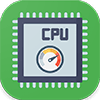
PassMark CPU-Mark
2,392 entries
2,392 entries
Popular comparisons
back to index



